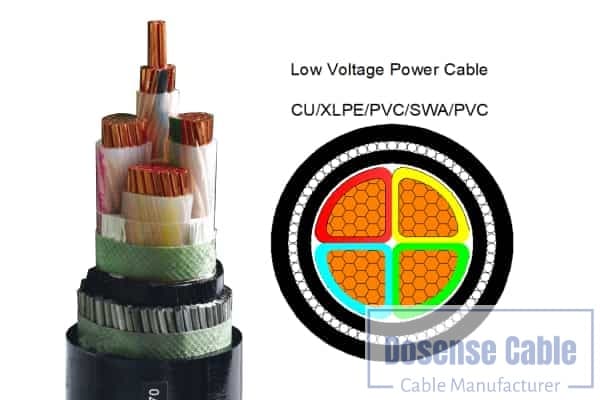Low voltage cable
Low voltage cable is an electrical conductor designed to carry electrical current at relatively low voltages, generally used in residential electrical distribution systems, commercial and industrial.
This type of cable is used to connect electrical devices to the electrical network and for internal power distribution in buildings and other facilities..
Low voltage cables have both PVC insulation (Polyvinyl chloride) like XLPE (cross-linked polyethylene). Both PVC and XLPE are commonly used insulating materials for low voltage cables..
Low voltage cables are one of our main products in Dosense Cable.
Low Voltage Cable
Low Voltage Copper And Aluminum Cable
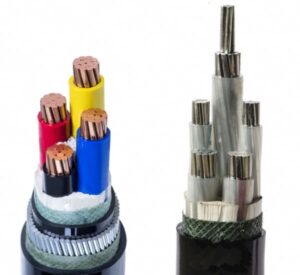
The structure of the low voltage cable is as follows.
Conductor: It covers the aluminum.
Due to its high electrical conductivity. sometimes flexibility or multiple thin strands are required.
Isolation: XLPE, PE, PVC.
Materials such as polyethylene (PE), cross-linked polyethylene (XLPE), polyvinyl chloride (PVC) or other polymeric materials. The choice of insulating material depends on factors such as operating temperature, chemical resistance and durability.
Armor: steel wire armor (SWA) or aluminum wire armor (AWA).
External cover: PVC, PE.
Provides mechanical protection and moisture protection, abrasion and other environmental factors. Materials such as PVC, polyethylene, polyolefin, depending on installation conditions and weather resistance requirements.
Low voltage overhead cable
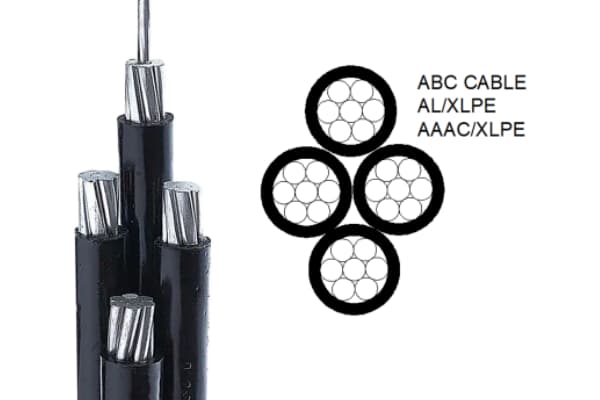
A low voltage overhead cable is a type of electrical cable designed to transmit electricity at lower voltages and over short distances..
These cables are commonly used in residential environments, rural areas and light industrial applications where reliability and safety are required.
Main characteristics of low voltage overhead cables.
Drivers: aluminum, aluminium alloy.
Contain conductive materials such as aluminum or aluminum alloy that carry electric current.
Isolation: XLPE, PE.
These cables are covered with insulating materials to prevent electrical leakage and ensure safety.
Support structure: Central support cable, Low voltage overhead cables are supported by poles or towers.
Resistance to Climatic Conditions: They are designed to withstand various weather conditions, including rain, snow and wind.
Voltage rating: They operate at voltages lower than 1000 volts (V).
They are commonly used in residential areas for street lighting, feeding small businesses, connecting individual homes and other low-power applications.
Instalation and maintenance: Installation and maintenance of low voltage overhead cables requires trained professionals and regular inspections to ensure safety and optimal performance..
Underground low voltage cable
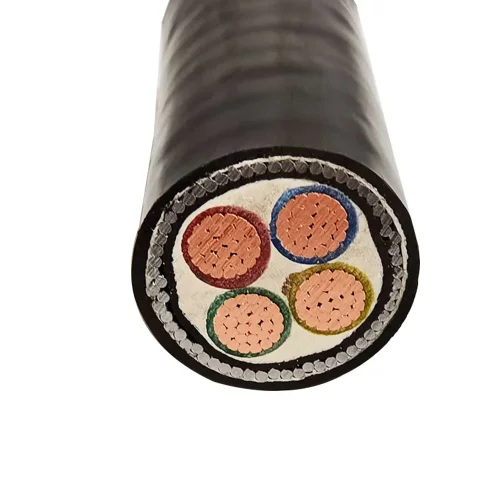
Description of low voltage underground electric cable.
Drivers: Copper or aluminum conductors,
Isolation: XLPE y PVC,
Designed for the underground environment, including humidity, abrasion and ground pressure.
Armor: Galvanized steel wire armor (SWA), aluminum wire armor (AWA)
to provide additional protection against mechanical damage and accidental digging.
Outer sling: To the outer PVC bow, PE and polyethylene protect the cable.
Instalation and maintenance.
Underground electrical cable installation requires trenching in accordance with project specifications. Once installed, a careful filling and compacting process is carried out to ensure the stability of the cable and prevent future damage..
Low voltage flexible cable
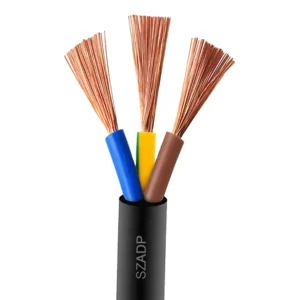
Description of low voltage flexible cable.
Low voltage flexible cable is a versatile electrical solution designed for applications where mobility and flexibility are required.
Main features.
Drivers: Flexible copper wires.
Isolation: PVC flexible (polyvinyl chloride) u otro material flexible similar.
This provides insulation protection against short circuits and ensures electrical safety.
Funda: Funda de PVC flexible.
Sizes and Colors: It is available in a variety of sizes and colors to suit different applications and make electrical circuits easier to identify..
How to choose the cross section of low voltage cable?
Choosing low voltage section cable is to guarantee a safe and efficient electrical supply in an electrical installation.
Determine the electrical charge: Calculate the total electrical load expected in the installation, including the sum of the currents, all devices and equipment that will be powered by the cable.
Evaluate cable length, Consider the total distance that the low voltage cable must travel from the power point to the consumption point. The longer the cable length, The greater the voltage drop and the greater the cross section of the cable must be to compensate for these losses..
Calculate the allowable voltage drop. Voltage drop affects system efficiency and can cause malfunctions in connected equipment. The allowable voltage drop is usually specified in local electrical regulations or standards.
Consider current capacity, ensure the cross section is capable of withstanding the maximum current expected in the installation.
Consider the safety factor. It is advisable to include a safety margin, when selecting the section of the low voltage cable, to take into account possible increases in load or changes in operating conditions in the future.
By following these steps and considerations you will be able to select the correct section of low voltage cable for your electrical installation., ensuring a reliable and efficient supply of electrical energy.
Accessories for low voltage cables
Low voltage cable accessories are essential components used to connect, finish, protect and maintain low voltage cables in electrical systems.
Terminals: Terminals are used to connect the ends of low voltage cables to electrical equipment, like switches, plugs, terminals, connectors or sockets.
These may be crimp terminals, compression terminals, screw terminals, among others.
Splices: Splices are used to join two low voltage cables., either to extend cable length or to repair a damaged cable. Splices must provide a secure, durable electrical connection while maintaining insulation integrity..
Branch Connectors: These connectors are used to divert some current from one primary wire to another secondary wire., generally to power additional equipment or branches of the electrical network.
Connection and distribution boxes: Junction boxes are used to house and protect low voltage cable splices, as well as to distribute electrical connections throughout an installation. These boxes can be embedded in the wall, surface mounted or buried.
Covers and protections: They are used to protect low voltage cables from mechanical damage., exposure to the elements, humidity, corrosion, among others. These covers can be plastic, metal or rubber, and can be flexible or rigid depending on the application.
Installation tools: These tools include wire strippers, engarzadores, pliers, screwdrivers and other specific tools for the installation and maintenance of low voltage cables.
Protection and safety accessories: include surge protection devices, overcurrent protectors, insulation protectors. grounding devices and other safety devices to protect cables and equipment from electrical damage.

